| Japanese | English |
Analysis of lung sound continues.
1. Abnormal Lung Sound (fine crackles)
Wave file fine crackles is loaded on the running ACF window. Fine crackle is also abnormal. It is a crackle with a dry quality, more crisp than gurgling, are apt to occur higher in the respiratory tree. Sound duration is below 5 ms, shorter than the coarse crackle.
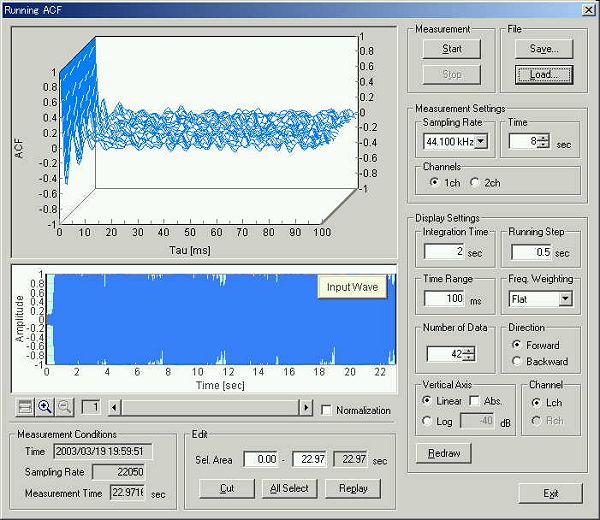
Data is loaded by SA. Previously analyzed data is listed. Red icon shows it was already calculated, and blue icon shows it is not calculated yet.
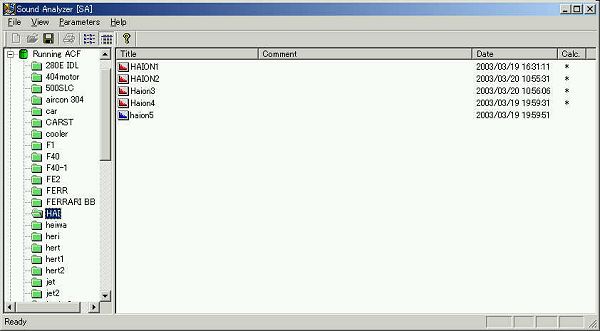
It is calculated with the same conditions.
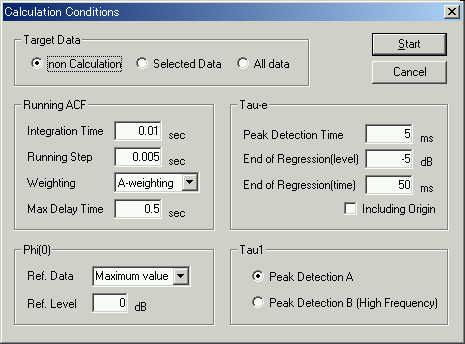
This is the time course of the sound level. The sound is continued for 22 s. Same as the last time (Lung sound measurement 2), the integration time and the calculation step are 10 ms and 5 ms. It means that the average sound level of 10 ms is calculated in every 5 ms. It seems that the time resolution is little low for analyzing each crackle sound (its duration is below 5 ms). But first, the analysis is done by the same condition.
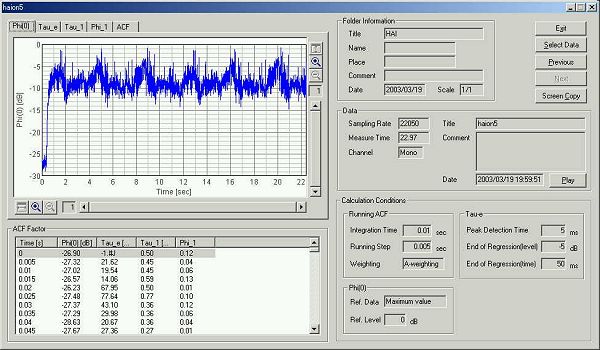
The graph is zoomed in to the first peak.
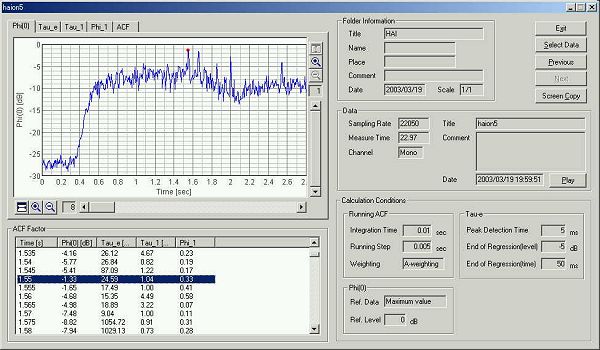
Graph image was exported. The ACF parameters, Tau-1, Phi-1, Tau-e, and the ACF waveform are shown.
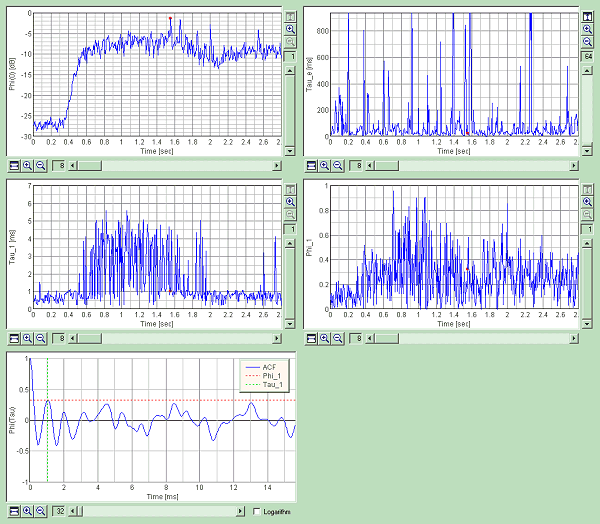
This is the ACF measured at 1.515 s, at which the Tau-e value is minimum.I think this is the feature point of this sound, because the minimum Tau_e indicates some abrupt change has occurred.
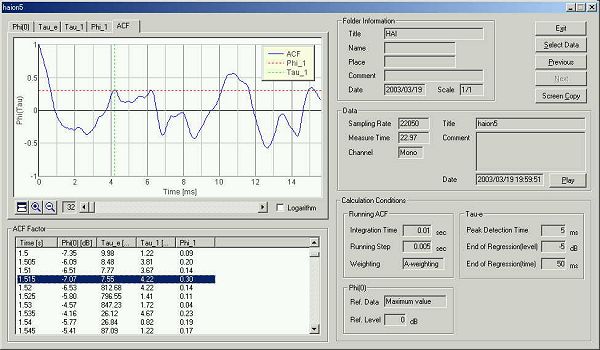
This is the ACF measured at 1.55 s.
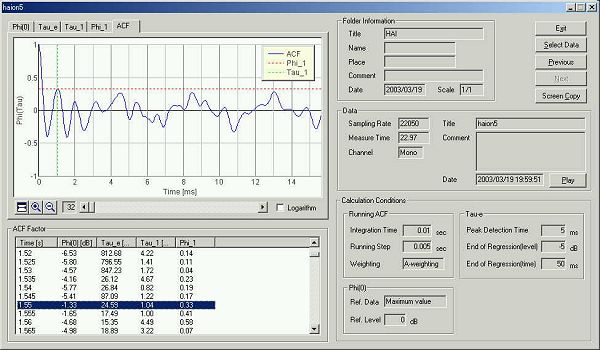
The graph of the sound level is zoomed in. Two crackles are recorded.
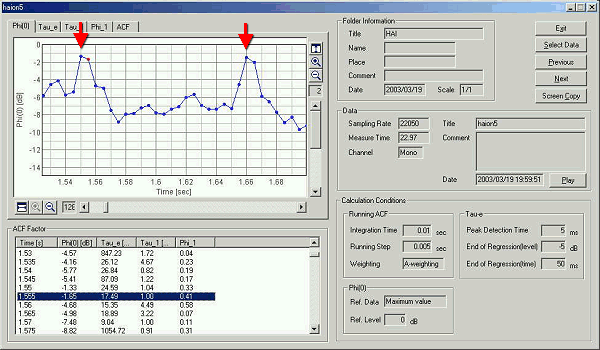
2. Abnormal Lung Sound (wheezing)
Next, wave file wheezing is loaded on the running ACF window.
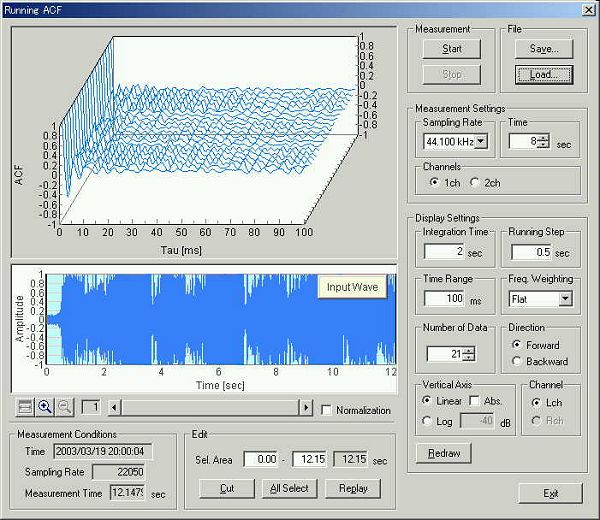
This is the time course of the sound level. The sound is continued for 12 s. The lasting time of the wheezing sound is 250 ms, so the detailed analysis is possible by this calculation conditions (i.e. the integration time is 10 ms and the calculation step is 5 ms).
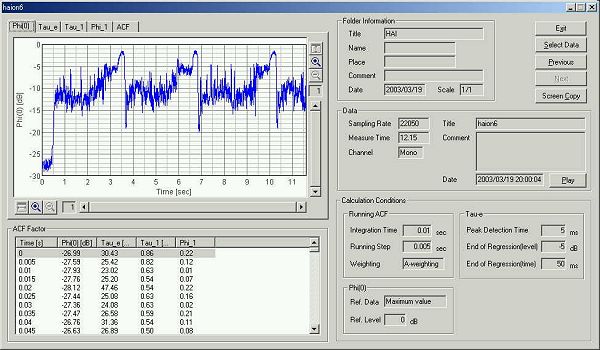
The graph is zoomed in to the first peak of the sound level.
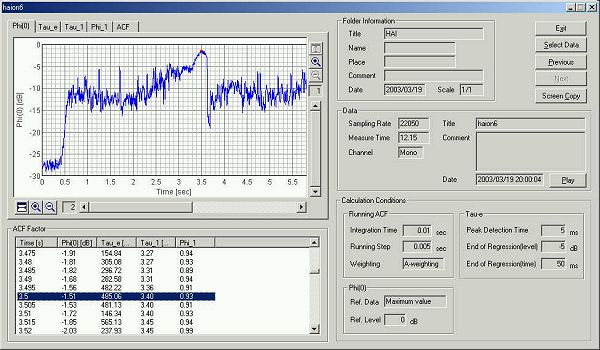
Graph image was exported.
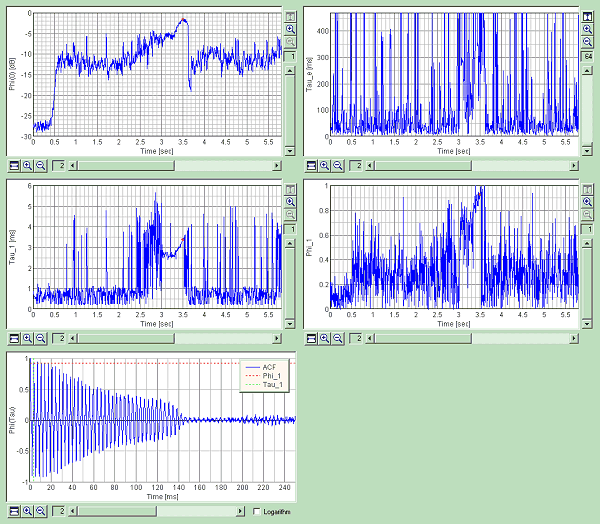
The graph is focused on one wheezing sound, occurred at 3.3-3.6 seconds.
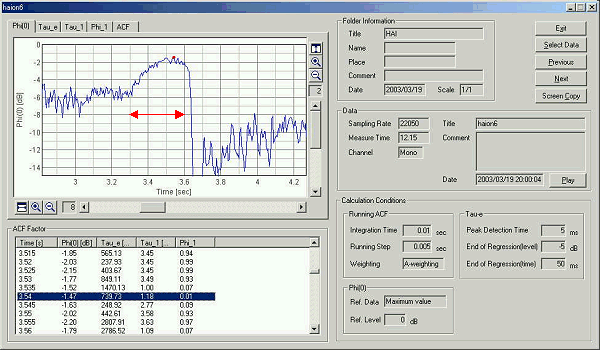
3. Abnormal Lung Sound (rhonchi)
Next, wave file rhonchi was loaded on the running ACF. Rhonchi are low pitched, snore-like sounds. They are caused by airway secretions and airway narrowing. One sound lasts over 250 ms.
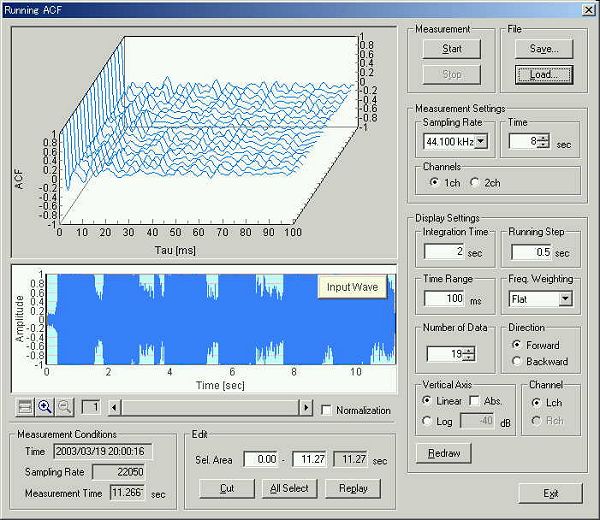
This is the time course of the sound level. The sound is continued for 11 s. Calculation conditions are the integration time of 10 ms and the calculation step of 5 ms. Same as above, detailed analysis of each sound is possible.
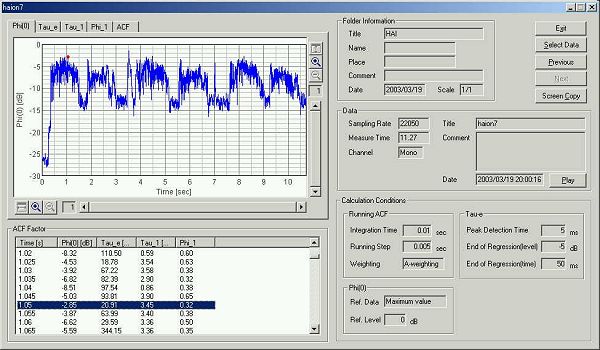
The graph is zoomed in to the first peak.
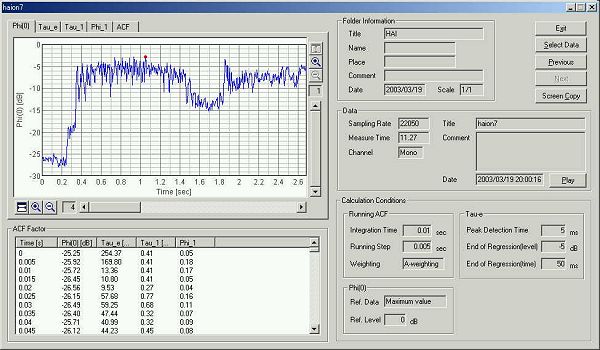
Graph image was exported.
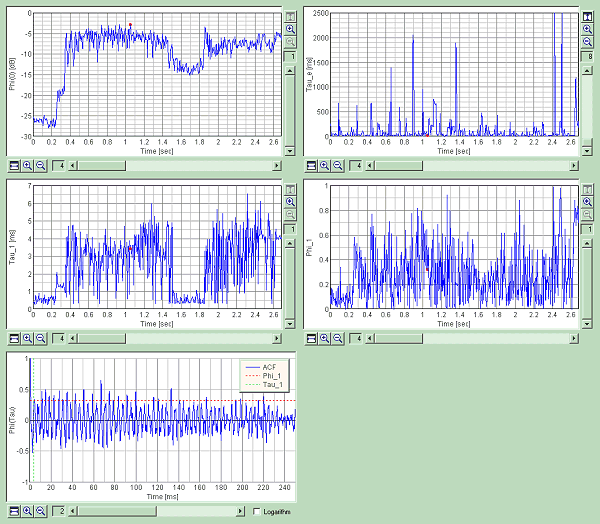
Attention was paid for the characteristic peak of the sound level.
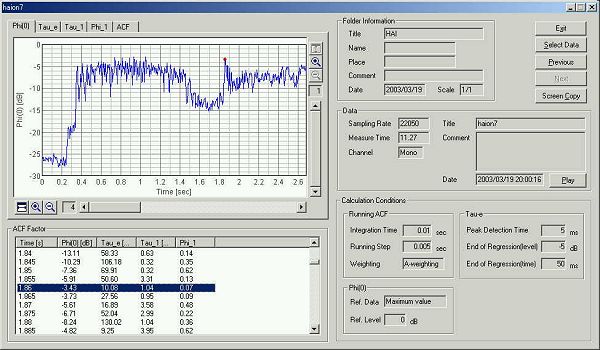
The graph of the sound level is zoomed in at 2.56 s. Two rhonchi are recorded. They last about 270 ms.
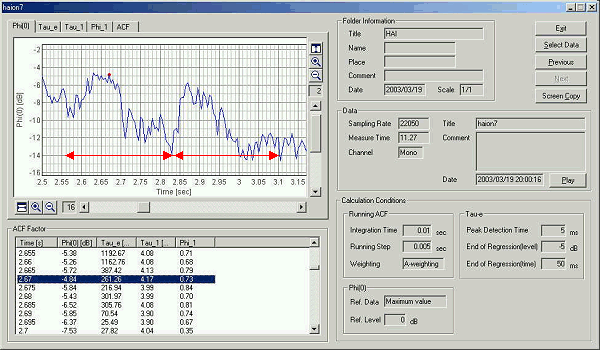
This is the ACF waveform measured at 1.86 s. First formant frequency is around 900 Hz.
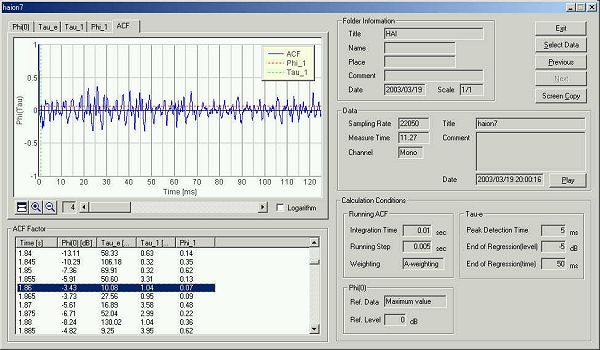
The ACF waveform below is measured at the very beginning of the rhonchi sound, and it has a short Tau-e value. Peak at 6.5 ms (=153.8 Hz) seems the fundamental frequency of the vocal tract. Peak at 2.5 ms corresponds to the first formant frequency around 400 Hz. Higher formants are measured at 0.5, 0.8 and 1.2 ms, which correspond to 2 kHz, 1.2 kHz, and 800 Hz respectively. It seems that those frequency components make a snoring sound.
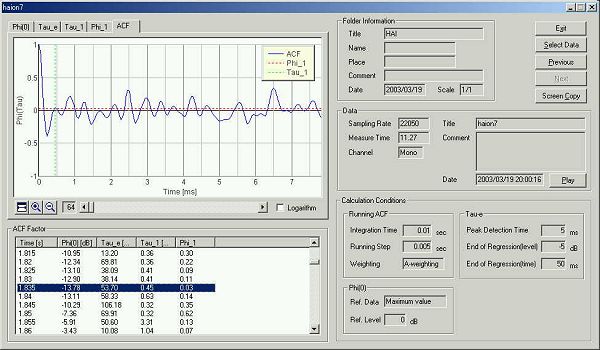
April 2003 by Masatsugu Sakurai